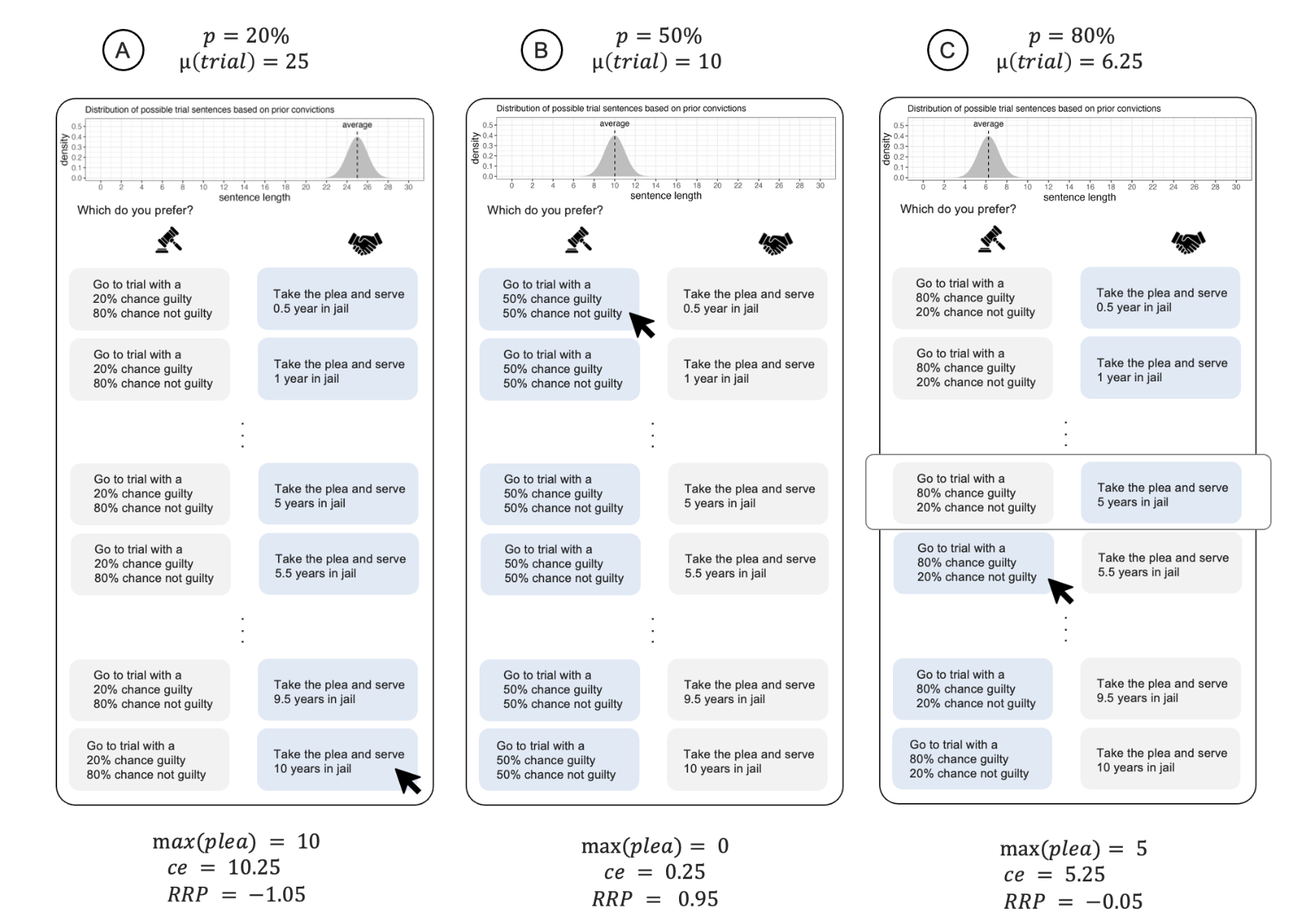The Anatomy of a Plea: How Uncertainty, Visualizations & Individual Differences Shape Plea Bargain Decisions
PDF Video Song


Abstract
Plea bargains are commonly used in the criminal justice system, where they can offer potential benefits to both the prosecution and the defendant. However, research has shown that defendants often engage in poor decision-making, such as accepting the plea even when the trial sentence is likely to be less severe. While previous studies have shown some evidence that uncertainty visualizations can improve decision-making, there is a lack of research on their effectiveness in domain-specific tasks like plea bargain decision making. In this work, we conduct a series of experiments to explore whether the presence and format of uncertainty impact plea bargain decisions, taking into account time pressure and individual differences. Our findings reveal that these factors can have a significant impact on plea bargain decisions. We also show evidence that communicating uncertainty in the form of text can elicit more optimal decisions under time-pressure conditions.